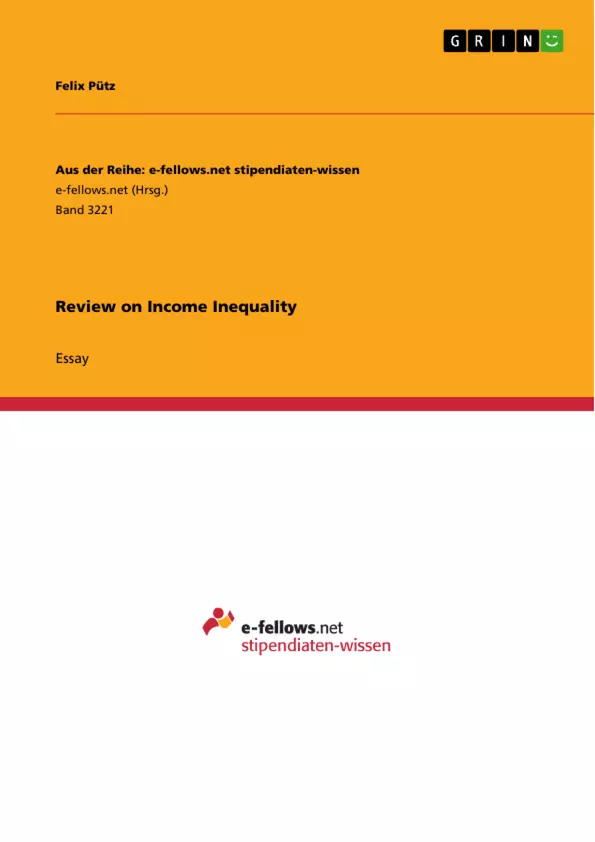Firstly, the paper shows evidence on the extent of income inequality in India, as a representative example.
Then it takes a broader view of the topic and identifies the causes of income inequality. Thirdly, it describes the general problems associated with income inequality and then explains the advantages associated with income inequality.
During the examination of this aspects, the paper will focus on the economic background, especially on aspects such as the equity-efficiency-trade-off, taxation and the role of the government, as well as on the deadweight loss.
Then it will analyze what the government can do to deal with that problem. Finally, it summarizes and compares the findings of this paper.
Inhaltsverzeichnis (Table of Contents)
- Introduction
- Evidence on the extent of income inequality in India
- Causes of income inequality
Zielsetzung und Themenschwerpunkte (Objectives and Key Themes)
This paper investigates the relationship between economic inequality, particularly income inequality, and economic and social development. Using India as a representative case, the paper explores the extent of income inequality, analyzes its causes, and examines the associated problems and advantages. The focus is on the economic background, including the equity-efficiency trade-off, taxation, the role of the government, and deadweight loss. The paper concludes by summarizing its findings and analyzing potential government interventions to address the issue.
- The extent of income inequality in India
- Causes of income inequality, including labor market dynamics, globalization, and changes in the transfer system
- The relationship between income inequality and economic and social development
- The equity-efficiency trade-off and its impact on income inequality
- The role of government policies in addressing income inequality
Zusammenfassung der Kapitel (Chapter Summaries)
- Introduction: This chapter introduces the topic of economic inequality, highlighting its increasing prevalence and the specific focus on income inequality. It outlines the paper's objectives and structure, including an examination of income inequality in India, its causes, and its effects on economic and social development.
- Evidence on the extent of income inequality in India: This chapter presents evidence on the extent of income inequality in India, using the Net Gini Index and analyzing the income share of different income groups. It highlights the widening gap between the top 10% and the middle 40% of the population, demonstrating the increasing trend in income inequality.
- Causes of income inequality: This chapter explores various factors contributing to income inequality, including changes in labor market returns, globalization, shifts in the transfer system, and decreasing marginal tax rates. It also discusses the role of education and the potential influence of the neoliberal economic system on income inequality.
Schlüsselwörter (Keywords)
This paper explores the issue of income inequality, focusing on its causes, effects, and potential solutions. Key terms include income inequality, economic development, social development, India, labor market, globalization, equity-efficiency trade-off, taxation, government intervention, and deadweight loss.
- Citar trabajo
- Felix Pütz (Autor), 2018, Review on Income Inequality, Múnich, GRIN Verlag, https://www.grin.com/document/494984



